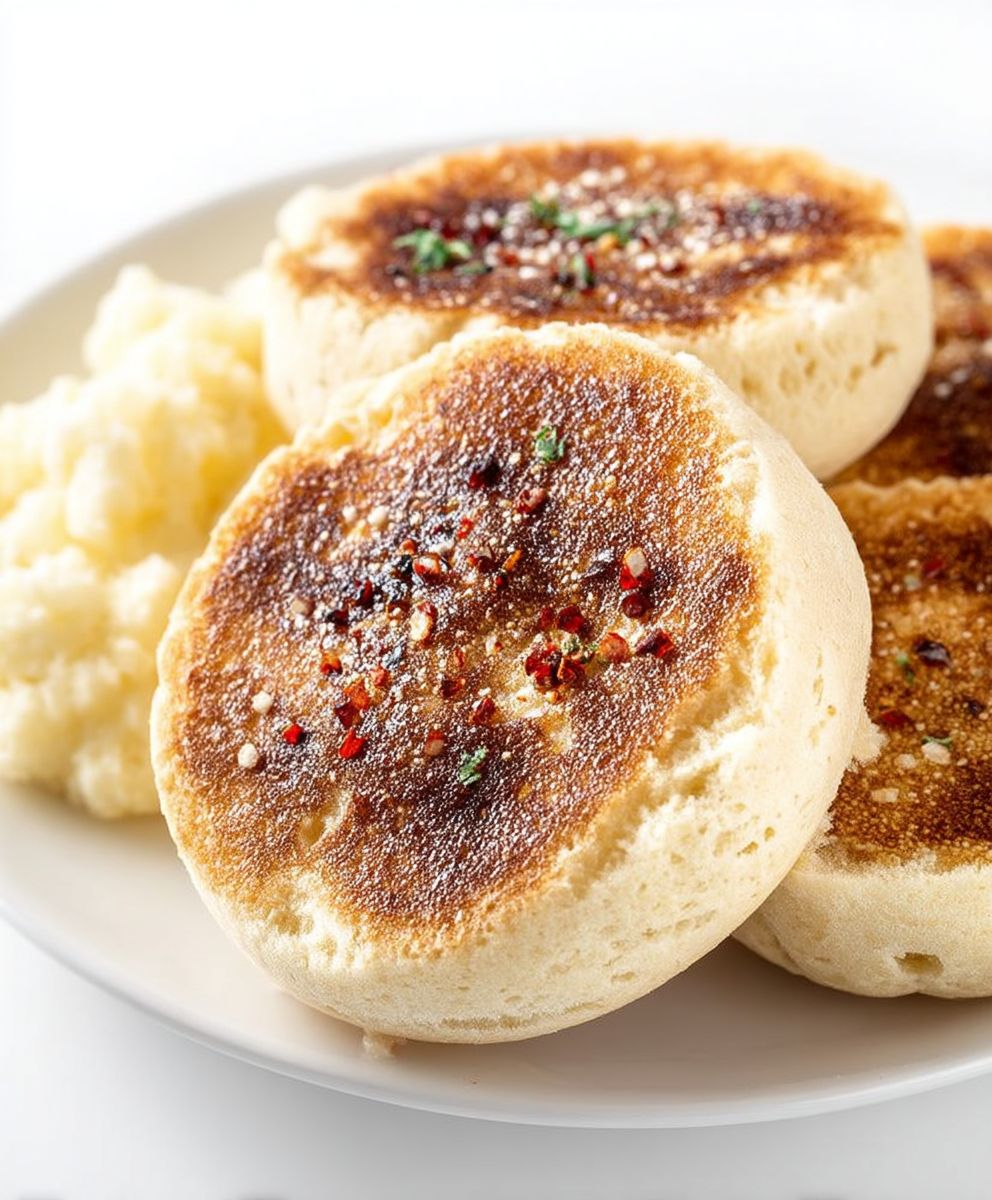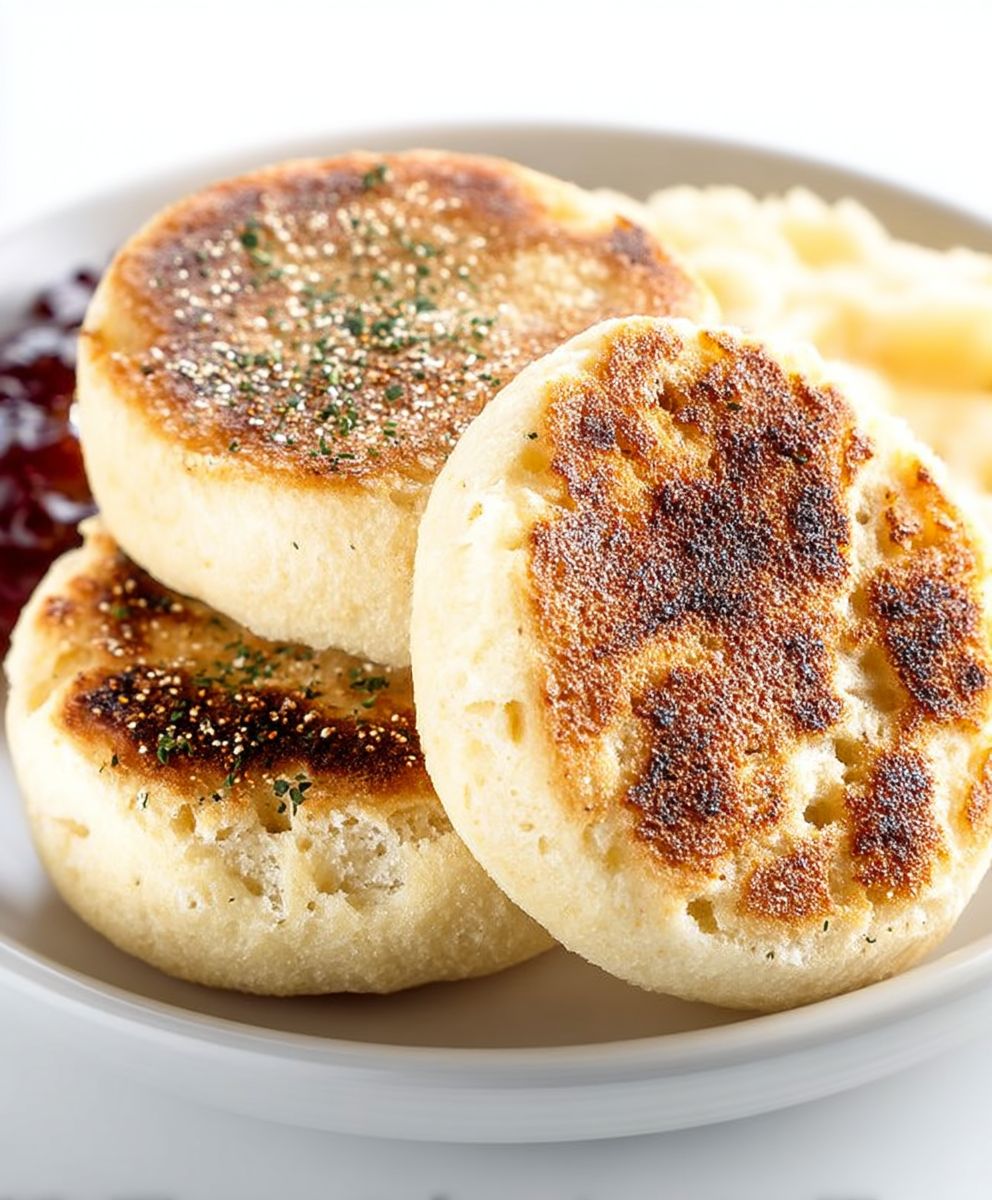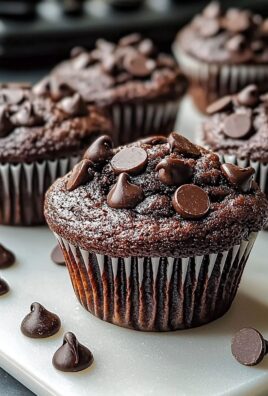English Muffins Homemade: Is there anything quite as satisfying as the aroma of freshly baked bread wafting through your kitchen? Today, we’re embarking on a culinary adventure to create a breakfast staple that’s surprisingly easy and incredibly rewarding: English muffins, made entirely from scratch in your very own home. Forget the store-bought variety; once you taste the difference, you’ll never go back!
The history of the English muffin is a charming tale that dates back to 19th-century England. It’s said that a baker named Samuel Bath Thomas, an English immigrant to the United States, popularized them. He began selling them from his bakery in New York City, and they quickly became a breakfast favorite. These delightful rounds of dough, cooked on a griddle, offered a unique texture and flavor that captivated taste buds.
What is it about English muffins homemade that makes them so irresistible? It’s the perfect combination of a slightly chewy exterior, a soft and airy interior, and those iconic nooks and crannies that are just begging to be filled with butter, jam, eggs, or your favorite toppings. Plus, the satisfaction of knowing you created something so delicious from simple ingredients is truly unparalleled. Get ready to experience the joy of homemade goodness!
Ingredients:
- For the Sponge:
- 1 cup (240ml) lukewarm water (105-115°F)
- 1 teaspoon granulated sugar
- 2 1/4 teaspoons (1 packet) active dry yeast
- 1 1/2 cups (190g) all-purpose flour, plus more for dusting
- For the Dough:
- 1/4 cup (60ml) lukewarm milk
- 1 large egg, lightly beaten
- 2 tablespoons (28g) unsalted butter, melted and cooled
- 1 tablespoon granulated sugar
- 1 1/2 teaspoons salt
- 2 1/2 to 3 cups (315-380g) all-purpose flour, plus more for dusting
- For Cooking:
- Cornmeal, for dusting
- Butter or oil, for greasing the griddle
Preparing the Sponge:
- In a large bowl, whisk together the lukewarm water and sugar. The water temperature is crucial; too hot, and you’ll kill the yeast; too cold, and it won’t activate properly. Aim for that sweet spot between 105 and 115 degrees Fahrenheit.
- Sprinkle the yeast over the water mixture and let it sit for 5-10 minutes, or until foamy. This step is essential to ensure your yeast is alive and active. If it doesn’t foam, your yeast might be old, and you’ll need to start with a fresh packet.
- Add the 1 1/2 cups of all-purpose flour to the yeast mixture and stir until just combined. Don’t overmix at this stage; you just want to form a shaggy dough.
- Cover the bowl with plastic wrap and let it sit in a warm place for 30-60 minutes, or until doubled in size and bubbly. This process, called proofing, allows the yeast to develop and create the airy texture we want in our English muffins.
Making the Dough:
- After the sponge has proofed, add the lukewarm milk, beaten egg, melted butter, sugar, and salt to the bowl. Stir to combine.
- Gradually add the remaining 2 1/2 to 3 cups of all-purpose flour, starting with 2 1/2 cups. Mix until a shaggy dough forms. The amount of flour you need will vary depending on the humidity and the type of flour you’re using.
- Turn the dough out onto a lightly floured surface and knead for 5-7 minutes, or until smooth and elastic. The dough will be slightly sticky, but resist the urge to add too much flour, as this can make the muffins tough. If it’s sticking excessively, add flour one tablespoon at a time.
- Place the dough in a lightly oiled bowl, turning to coat. Cover with plastic wrap and let it rise in a warm place for 1-1.5 hours, or until doubled in size. Again, finding a warm spot is key for proper rising.
Shaping and Resting the Dough:
- Once the dough has doubled, gently punch it down to release the air.
- Turn the dough out onto a lightly floured surface and roll it out to about 1/2 inch thickness.
- Using a 3-inch round cutter (or a glass or jar), cut out as many rounds as possible. Reroll the scraps and cut out more rounds until all the dough is used.
- Sprinkle a baking sheet generously with cornmeal. Place the English muffin rounds on the prepared baking sheet, leaving some space between each one.
- Sprinkle the tops of the muffins with more cornmeal.
- Cover the baking sheet loosely with plastic wrap and let the muffins rest for 30-45 minutes. This second rise is crucial for achieving that signature English muffin texture. They should puff up slightly.
Cooking the English Muffins:
- Heat a lightly oiled or buttered griddle or large skillet over medium-low heat. The key here is low and slow cooking. If the heat is too high, the muffins will brown on the outside before they’re cooked through on the inside.
- Carefully place the English muffin rounds on the hot griddle, being careful not to overcrowd the pan.
- Cook for 8-12 minutes per side, or until golden brown and cooked through. You can test for doneness by inserting a toothpick into the center of a muffin; it should come out clean.
- If the muffins are browning too quickly, reduce the heat. If they’re not browning enough, increase the heat slightly.
- Once cooked, transfer the English muffins to a wire rack to cool completely.
Splitting and Serving:
- The best way to split an English muffin is with a fork. Insert the tines of a fork all the way around the muffin, about halfway through, and then gently pull the two halves apart. This creates those characteristic nooks and crannies that are perfect for catching butter and jam.
- Toast the English muffin halves until golden brown.
- Serve immediately with your favorite toppings, such as butter, jam, cream cheese, or eggs.
Tips for Success:
- Water Temperature: As mentioned earlier, the water temperature for activating the yeast is crucial. Use a thermometer to ensure it’s between 105 and 115 degrees Fahrenheit.
- Don’t Overmix: Overmixing the dough can result in tough English muffins. Mix until just combined, and then knead for the recommended time.
- Low and Slow Cooking: Cooking the muffins over medium-low heat is essential for ensuring they cook through evenly without burning.
- Cornmeal is Key: Don’t skip the cornmeal! It adds a lovely texture and flavor to the muffins.
- Freezing: These English muffins freeze beautifully. Once cooled, wrap them individually in plastic wrap and then place them in a freezer bag. They can be stored in the freezer for up to 2 months. To thaw, simply remove them from the freezer and let them thaw at room temperature.
Variations:
- Whole Wheat English Muffins: Substitute up to half of the all-purpose flour with whole wheat flour for a healthier option.
- Cinnamon Raisin English Muffins: Add 1/2 cup of raisins and 1 teaspoon of cinnamon to the dough.
- Savory English Muffins: Add 1/4 cup of shredded cheese, chopped herbs, or sun-dried tomatoes to the dough.

Conclusion:
And there you have it! I truly believe this recipe for homemade English muffins is a game-changer. Forget those store-bought, often bland versions once you taste the fluffy, tangy goodness of these freshly made muffins, you’ll never go back. The texture is simply unparalleled, with those signature nooks and crannies just begging to be filled with your favorite toppings. The slight tang from the overnight proof adds a depth of flavor that’s impossible to replicate with a quick recipe.
But the real reason this recipe is a must-try? It’s surprisingly simple! Yes, there’s a bit of waiting involved, but the active time is minimal. Most of the magic happens while the dough is resting, allowing the flavors to develop and the gluten to relax. Trust me, the effort is more than worth the reward. You’ll be rewarded with a batch of golden-brown, perfectly imperfect English muffins that will impress your family and friends (or, let’s be honest, just yourself!).
Serving Suggestions and Variations
Now, let’s talk about how to enjoy these beauties! The possibilities are truly endless. Of course, the classic is always a winner: toasted with butter and your favorite jam or marmalade. But don’t stop there!
* Breakfast Bliss: Top with scrambled eggs, crispy bacon or sausage, and a slice of cheese for a hearty and satisfying breakfast sandwich.
* Lunchtime Delight: Use them as the base for mini pizzas, topped with tomato sauce, mozzarella, and your favorite veggies or pepperoni.
* Elegant Appetizer: Spread with cream cheese and smoked salmon, or a dollop of pesto and a sun-dried tomato.
* Sweet Treat: Toast and top with Nutella and sliced bananas, or a drizzle of honey and a sprinkle of cinnamon.
And if you’re feeling adventurous, why not try some variations?
* Whole Wheat Wonders: Substitute up to half of the all-purpose flour with whole wheat flour for a nuttier flavor and added fiber.
* Seeded Sensations: Add a tablespoon or two of your favorite seeds (sesame, poppy, sunflower) to the dough for extra texture and flavor.
* Herbaceous Heaven: Mix in some chopped fresh herbs (rosemary, thyme, chives) for a savory twist.
* Cheesy Goodness: Incorporate shredded cheddar or Parmesan cheese into the dough for a cheesy delight.
I encourage you to experiment and find your favorite combinations! The beauty of homemade English muffins is that you can customize them to your heart’s content.
So, what are you waiting for? Gather your ingredients, clear your schedule (just a little bit!), and get ready to embark on a delicious adventure. I promise you won’t regret it. This recipe is a keeper, and I’m confident it will become a staple in your kitchen.
Once you’ve tried it, I’d absolutely love to hear about your experience! Did you make any variations? What were your favorite toppings? Share your photos and stories in the comments below. Let’s spread the love for homemade English muffins and inspire others to give it a try. Happy baking! I can’t wait to see what you create!
English Muffins Homemade: The Ultimate Guide to Baking Perfect Muffins
Homemade English Muffins with classic nooks and crannies, perfect for toasting and topping.
Ingredients
- 1 cup (240ml) lukewarm water (105-115°F)
- 1 teaspoon granulated sugar
- 2 1/4 teaspoons (1 packet) active dry yeast
- 1 1/2 cups (190g) all-purpose flour, plus more for dusting
- 1/4 cup (60ml) lukewarm milk
- 1 large egg, lightly beaten
- 2 tablespoons (28g) unsalted butter, melted and cooled
- 1 tablespoon granulated sugar
- 1 1/2 teaspoons salt
- 2 1/2 to 3 cups (315-380g) all-purpose flour, plus more for dusting
- Cornmeal, for dusting
- Butter or oil, for greasing the griddle
Instructions
- Preparing the Sponge: In a large bowl, whisk together the lukewarm water and sugar. Sprinkle the yeast over the water mixture and let it sit for 5-10 minutes, or until foamy. Add the 1 1/2 cups of all-purpose flour to the yeast mixture and stir until just combined. Cover the bowl with plastic wrap and let it sit in a warm place for 30-60 minutes, or until doubled in size and bubbly.
- Making the Dough: After the sponge has proofed, add the lukewarm milk, beaten egg, melted butter, sugar, and salt to the bowl. Stir to combine. Gradually add the remaining 2 1/2 to 3 cups of all-purpose flour, starting with 2 1/2 cups. Mix until a shaggy dough forms. Turn the dough out onto a lightly floured surface and knead for 5-7 minutes, or until smooth and elastic. Place the dough in a lightly oiled bowl, turning to coat. Cover with plastic wrap and let it rise in a warm place for 1-1.5 hours, or until doubled in size.
- Shaping and Resting the Dough: Once the dough has doubled, gently punch it down to release the air. Turn the dough out onto a lightly floured surface and roll it out to about 1/2 inch thickness. Using a 3-inch round cutter (or a glass or jar), cut out as many rounds as possible. Reroll the scraps and cut out more rounds until all the dough is used. Sprinkle a baking sheet generously with cornmeal. Place the English muffin rounds on the prepared baking sheet, leaving some space between each one. Sprinkle the tops of the muffins with more cornmeal. Cover the baking sheet loosely with plastic wrap and let the muffins rest for 30-45 minutes.
- Cooking the English Muffins: Heat a lightly oiled or buttered griddle or large skillet over medium-low heat. Carefully place the English muffin rounds on the hot griddle, being careful not to overcrowd the pan. Cook for 8-12 minutes per side, or until golden brown and cooked through. Transfer the English muffins to a wire rack to cool completely.
- Splitting and Serving: Split an English muffin with a fork. Insert the tines of a fork all the way around the muffin, about halfway through, and then gently pull the two halves apart. Toast the English muffin halves until golden brown. Serve immediately with your favorite toppings, such as butter, jam, cream cheese, or eggs.
Notes
- Water Temperature: The water temperature for activating the yeast is crucial. Use a thermometer to ensure it’s between 105 and 115 degrees Fahrenheit.
- Don’t Overmix: Overmixing the dough can result in tough English muffins. Mix until just combined, and then knead for the recommended time.
- Low and Slow Cooking: Cooking the muffins over medium-low heat is essential for ensuring they cook through evenly without burning.
- Cornmeal is Key: Don’t skip the cornmeal! It adds a lovely texture and flavor to the muffins.
- Freezing: These English muffins freeze beautifully. Once cooled, wrap them individually in plastic wrap and then place them in a freezer bag. They can be stored in the freezer for up to 2 months. To thaw, simply remove them from the freezer and let them thaw at room temperature.






Leave a Comment